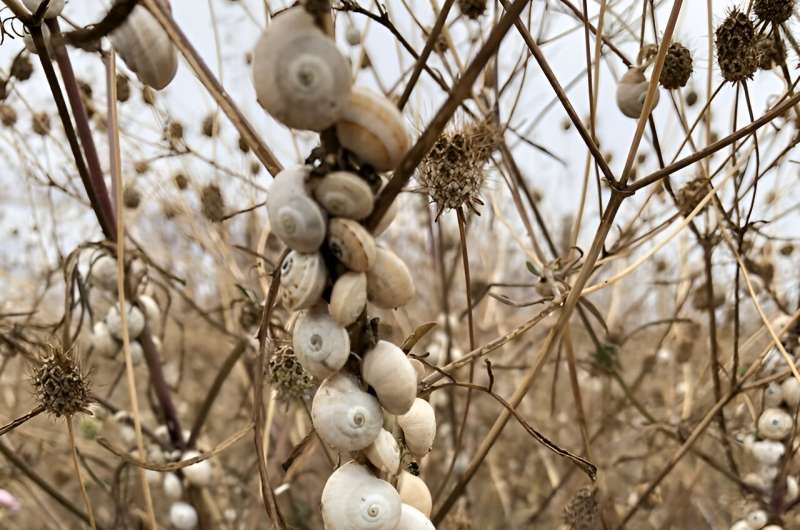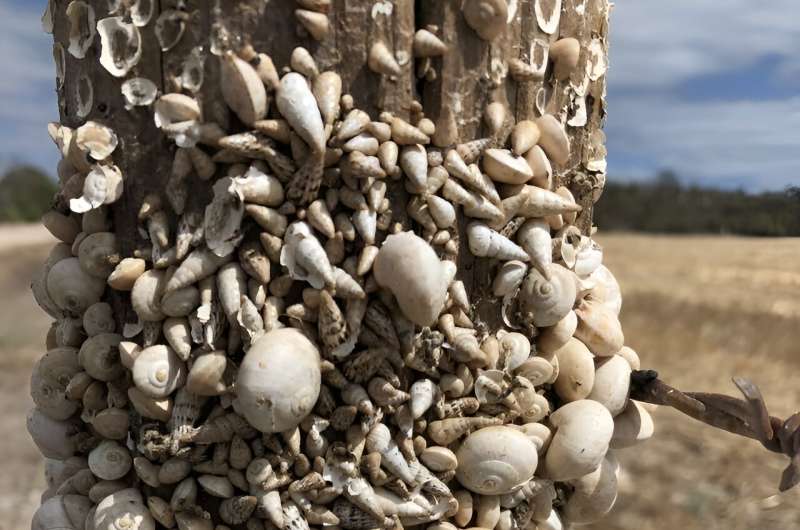This article has been reviewed according to Science X's editorial process and policies. Editors have highlighted the following attributes while ensuring the content's credibility:
fact-checked
trusted source
proofread
Lab and field tests suggest snails like red and dislike garlic

Pest snail species prefer the color red but dislike garlic, according to new research from CSIRO, Australia's national science agency.
Researchers conducted laboratory and field tests on four invasive snail species as part of a Grains Research and Development Corporation (GRDC) national research program.
The program is designed to provide Australian grain growers with new tools and management techniques to combat snails, aiming to minimize losses and improve market opportunities for affected crops.
Researchers evaluated the "push-pull" mechanisms that attract or repel snails such as different colors, and also looked at potential deterrents such as garlic and coffee.
CSIRO Senior Research Scientist Dr. Valerie Caron said the fact snails were attracted to the color red was unexpected, as it's generally thought gastropods can't see colors.
"Red doesn't play an obvious role in snail life, so this color preference was a surprise," Dr. Caron said. "Garlic was most effective at preventing snails from reaching food sources under laboratory conditions. Coffee barriers offered only limited protection, especially after 24 hours, with some snails even eating the coffee grounds.
"Ultimately, we're working to develop new management techniques for snails using attractants (color) for trapping and removal and safe repellents, such as garlic, as barriers."

French Masters student Cedric Kosciolek was chief snail wrangler for the project during his internship at the CSIRO European Laboratory.
"When we think about snails, and gastropods more generally, we expect them to be a boring subject," Mr. Kosciolek said.
"But my internship showed me the opposite. We saw behavioral differences between the four species. It just confirmed that the natural world is always full of surprises and diversity."
GRDC pest manager Leigh Nelson said GRDC has a long history of investing in research to find new ways to control pest snails.
"Invasive snails and slugs contaminate cereal and legume crops and cost the grain industry over $170 million each year," Dr. Nelson said.
"The development of improved management tactics for snails and slugs remains a top priority to improve grain growers' profitability. This investment looks to provide Australian grain growers with new tools and management techniques to combat snails, aiming to minimize losses and improve market opportunities for affected crops."
It's hoped the "push-pull" mechanism using snail behavior could one day reduce snails' impact on Australian grain crops.
Further research and field trials in Australia will be needed before push–pull mechanisms could be deployed in the field against invasive snails.
Provided by CSIRO





















